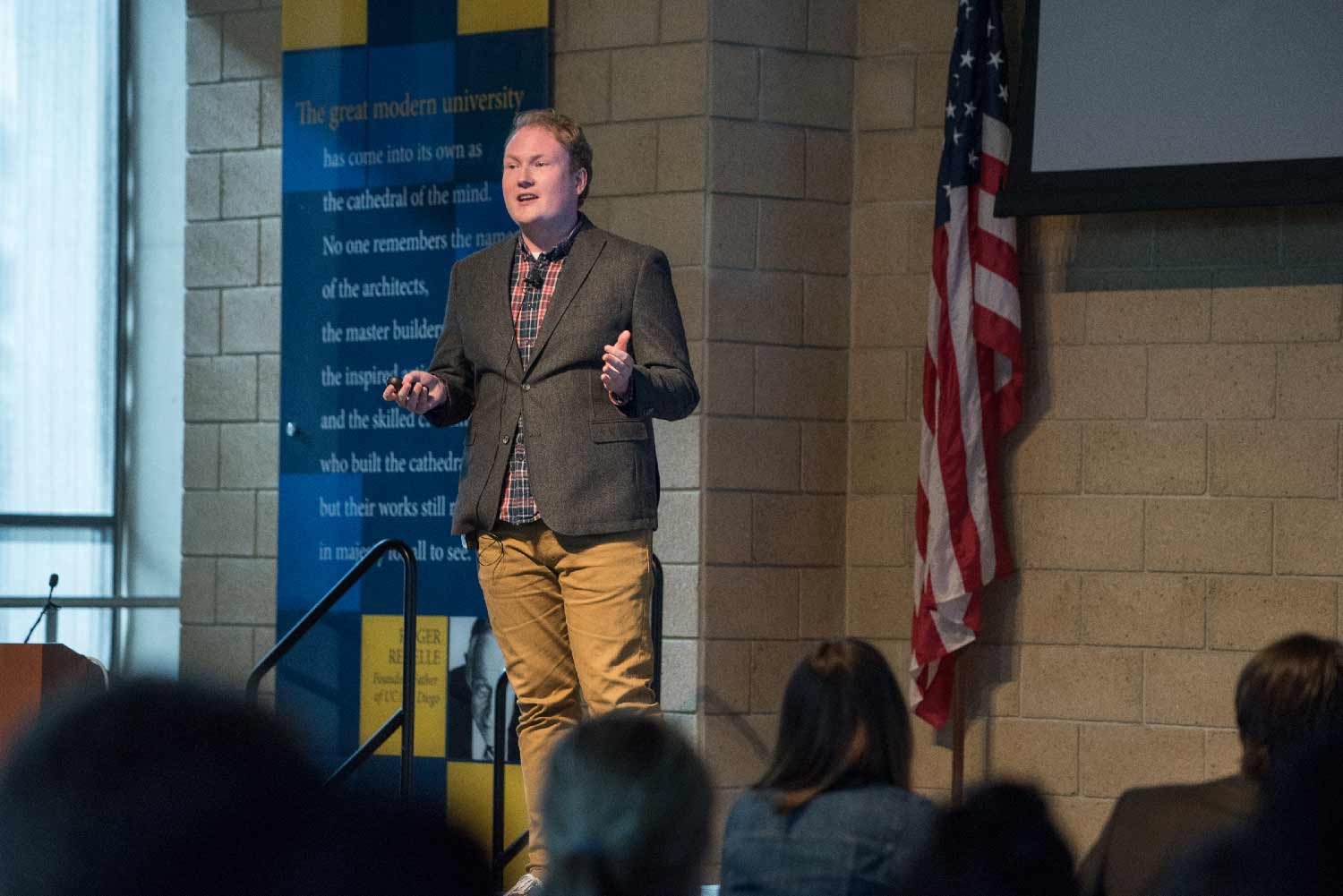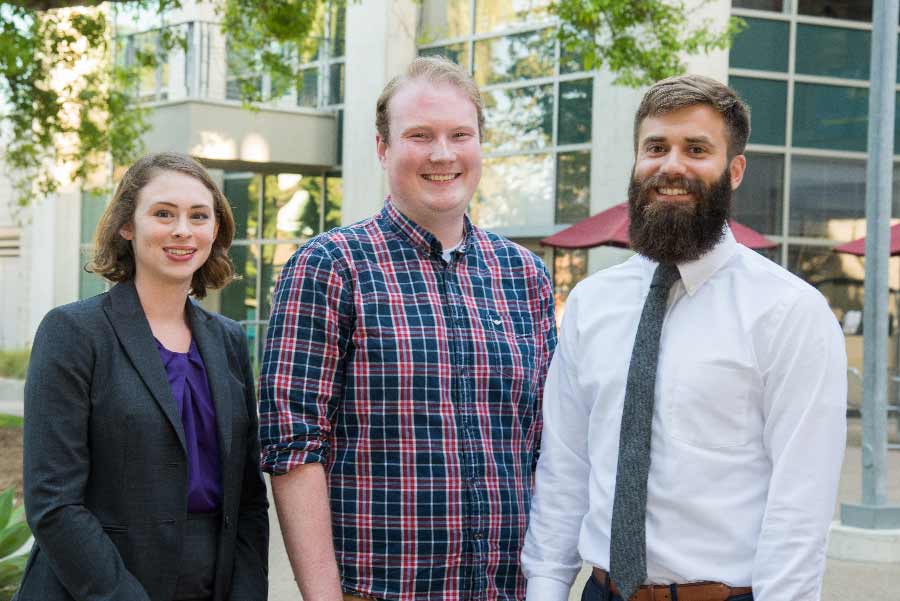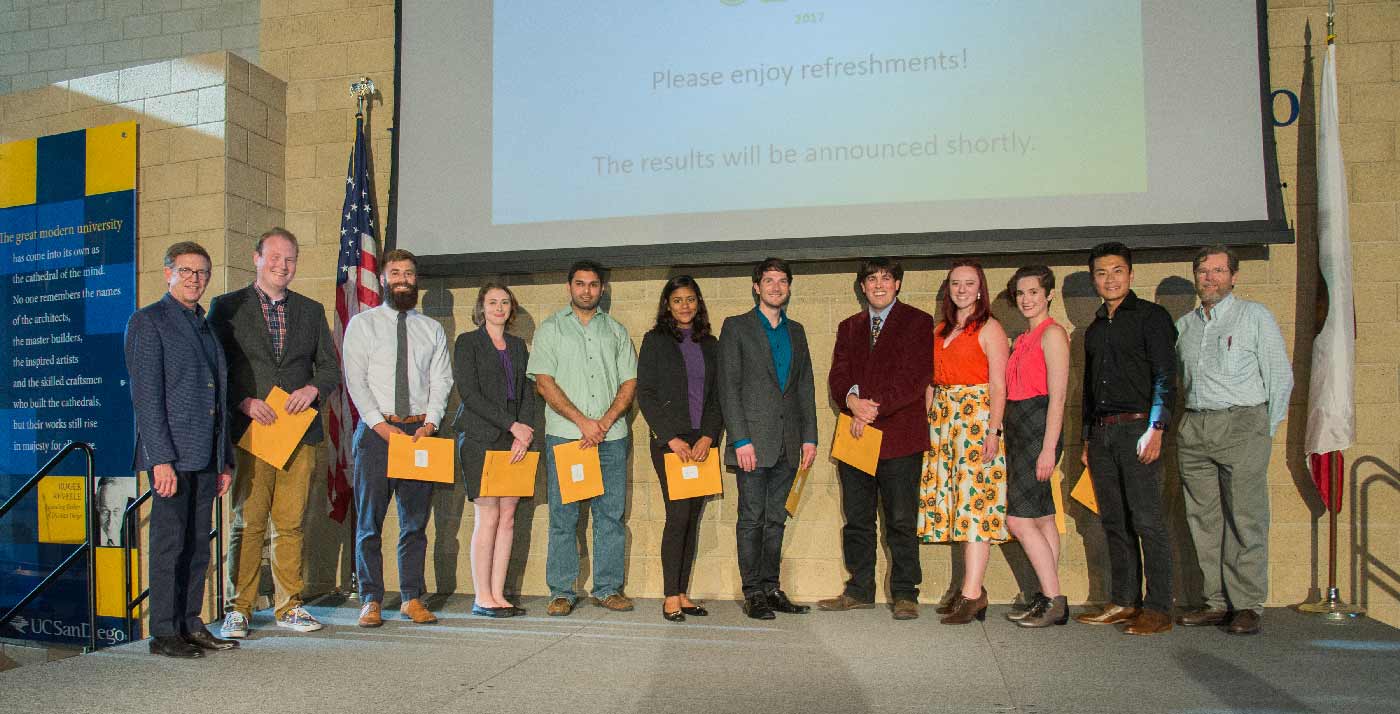UC San Diego Among Multidisciplinary Awards Providing $221M Nationally for Cutting-Edge Projects
Technology & Engineering
By:
Published Date
By:
Share This:

With a three-minute talk entitled “Using Geometry to Build Better Birth Control,” engineering graduate student Geoff Hollett took first place at the UC San Diego Grad Slam competition held April 5. Now in its fourth year, the event challenges graduate students across campus to break down their research into bite-sized, jargon-free presentations that can be enjoyed by a broad audience.
As the campus winner, Hollett will go on to compete with students across the state in the UC-wide Grad Slam, to be hosted by UC President Janet Napolitano at LinkedIn headquarters in San Francisco today. The 10 UC finalists will square off before a panel of leaders from government, industry, media and higher education for a chance to take home a share of the $10,000 in prize money and be named the UC Grad Slam champion.
The goal of Grad Slam is to give emerging scientists and scholars the skills to communicate their work, and why it matters, to the public.
“The ability to effectively communicate your work is a critical skill for graduate students to develop, whether they plan to pursue a career in academia, industry, government or other fields,” said Kit Pogliano, dean of the UC San Diego Graduate Division. “Grad Slam is an excellent opportunity for our students to practice these skills, while also engaging the community in graduate student research and how it impacts society.”
At UC San Diego, preparations for the competition began in February with workshops and one-on-one coaching sessions facilitated by the Graduate Division in partnership with the Center for Student Involvement and Qualcomm Institute. Participants received personalized feedback on how to best tell their story, down to details such as when to use hand gestures.
“It’s a challenge to determine what goes into a one-hour presentation to fellow researchers, let alone a three-minute public talk,” said Hollett, who is pursuing a doctorate in materials science and engineering. His research aims to improve access to birth control in the developing world by designing a better drug. “In preparing for Grad Slam, I’ve learned to take a step back and think about what will resonate with other people.”
In sub-Saharan Africa, a third of women who use contraception use an injectable drug. However, discontinuation rates are high, and the currently available formulations are only effective for one to three months. Hollett’s research aims to develop an injectable contraceptive that would last for six months.
“When people think about access to contraception, they often think of it as a policy or education issue, not a scientific question,” explained Hollett. “But I’m specifically looking at access in the developing world, where the usage is quite different, and where improving the drug itself could make a big difference.”

He added, “Unplanned pregnancies in resource-poor countries can be really dangerous. There are much higher rates of complications and maternal death. If our project is successful, we could expand access and choice for women around the world.”
To explain how he is building a better drug, Hollett goes back to the basics: geometry.
The current drug is a cube, a 3D shape. The problem with trying to dissolve a 3D shape in a solution is that its surface area gets smaller over time, like a sugar cube dissolving in a cup of coffee. Likewise, the drug concentration decreases over time and it becomes less effective.
Hollett’s research group is attempting to change the drug’s geometry from a 3D cube to what looks like a one dimensional wire by using a porous silicon material. The change in shape means that the drug can be released at a constant rate over the six-month period.
Giulia Hoffmann, who served on the panel of judges at Grad Slam and is a Graduate Student Career Advisor at UC San Diego, noted, “Geoff’s talk was very compelling, and was particularly successful at drawing connections between his specific research focus and the larger impact of his work on women’s health and quality of life. I was impressed by how clearly he explained his research to people outside of his field, providing enough detail so we could understand its impact but not get lost in those details.”
In addition to teaching students to be engaging and effective communicators, Grad Slam is designed to showcase the breadth and depth of graduate research. UC San Diego has more than 5,700 graduate students who generate new knowledge through their original scholarship and who help train and mentor undergraduates. Grad Slam offers a glimpse into the dynamic work of these students, from the nanoengineer working with robots to the history scholar studying political legitimacy.

In addition to Hollett’s first place win, the UC San Diego Grad Slam recognized Jonathan Trueblood (chemistry and biochemistry) with second place and Erin Smolak (language and communicative disorders) with third place.
The UC systemwide Grad Slam will take place at 10:30 a.m. on May 4 and will be livestreamed on the UC Grad Slam website.
Share This:
Keep up with all the latest from UC San Diego. Subscribe to the newsletter today.